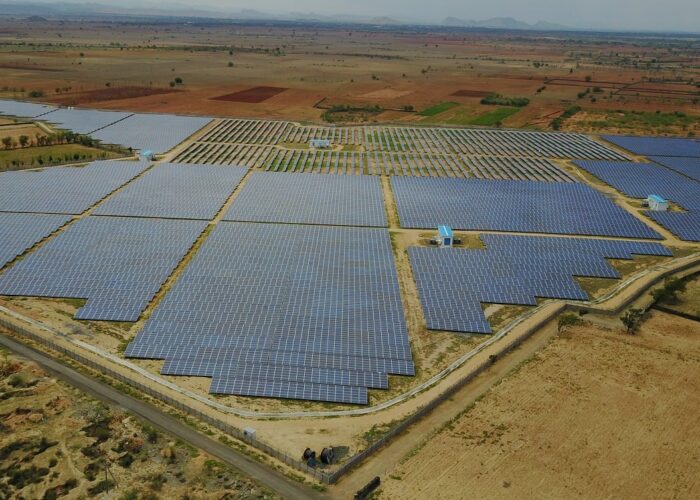Certainly, the solar industry is defined by what unites it: for example, the bonding of close competitors, SolarCity, Sungevity, Sunrun and Verengo, over the defence of net energy metering in a solar versus utility industry battle.
But it could be another emerging sign of maturation in the industry that it is also defined by internal differences.
Unlock unlimited access for 12 whole months of distinctive global analysis
Photovoltaics International is now included.
- Regular insight and analysis of the industry’s biggest developments
- In-depth interviews with the industry’s leading figures
- Unlimited digital access to the PV Tech Power journal catalogue
- Unlimited digital access to the Photovoltaics International journal catalogue
- Access to more than 1,000 technical papers
- Discounts on Solar Media’s portfolio of events, in-person and virtual
Since 2010, third party ownership (TPO) has rapidly begun to dominate the market. GTM Research forecasts that the residential solar financing market will rise from $1.3 billion in 2012 to $5.7 billion in 2016. Residential TPO-financing already accounts for more than 50% of new capacity in California, Arizona, Colorado and Massachusetts, a share that could well increase.
But five years from now, will the TPO model still dominate the industry at the expense of ownership, even if costs continue to decline?
Sara Ross, chief executive and co-founder of Sungage, a solar finance company based in Massachusetts, says the answer to that question is no.
“I certainly expect to see a trend back towards ownership,” she told PV-Tech. “It's an anathema compared with other consumer products that we're skewed this far towards leasing. I don't believe that this will continue, especially since this thing is attached to people's homes, an emotional and psychological thing.”
Last month, Ross argued at the GTM Solar Summit in Phoenix, Arizona, that other consumer products were not acquired in the same way as the dominant TPO model. She pointed out that 80% of America's motorists owned their car, while only 20% leased them. In Germany, where one out of every 33 households has solar installed, 60% of systems are owned by individuals and farmers, she added.
“These are two really striking contrasts that should make us all question why the residential solar market in the US looks the way it does right now,” she said. “The onus is on third-party ownership to justify why anyone should believe that they are going to continue to dominate this market and why the rest of us in this ecosystem should build businesses around their continued dominance. That might be an outrageous statement … [people will say] the world looks like it does for a reason.”
Ross claims that the TPO is a historical anomaly hanging over from the original drafting of language for the Investment Tax Credit in 2006, which was capped for individuals at a paltry US$2,000 while commercial operators could claim the full 30%.
“An asymmetry in opportunity … was born,” said Ross. “This business model is a policy artifact – we started with a financial innovation and we've spent the last six to seven years working out how to sell this financing product to consumers profitably – I'm not sure if anyone has figured that part out. What they've shown is that marketing works.”
The American Recovery and Reinvestment Act 2008 removed the $2,000 cap for individuals, but the TPO juggernaut was already hurtling down the interstate.
“The whole conversation with the consumer was headed a certain direction,” said Ross.
Ross also suggested that those with $75,000 income per household would probably have a tax liability to monetise the ITC tax credit, an easier process with a tax return than filling out a FedEx shipping form.
But when SolarCity, Sungevity and Sunrun head out into the market and source capital, tax equity is expensive and economically inefficient, Ross reckons.
“We have a sector where most of the financing coming to support rooftop energy solar is coming from tax equity investors and equity investors, in other words, VC firms. That is very expensive,” she said.
This is purely my conjecture, but the popularity of the TPO business model may be explained by the virtuous circle created by SolarCity's original venture capital investors – Draper Fisher Jurvetson, DBL Investors and Generation Investment Management – then becoming tax equity investors.
SolarCity has raised $200 million in corporate capital and $1.6 billion in structured financing from a range of investors, including Bank of America Merrill Lynch, Google, PG&E Corporation and US Bancorp. According to GTM Research, there have been 28 individual funds raised for residential solar projects totaling over $3.1 billion. US Bancorp has been by far the most prolific investor, providing 14 funds and over US$1.35 billion to the market.
“SolarCity is trying to replicate a solar utility and then if people want to engage with a solar utility their model will continue to be successful,” she said. “I guess we're offering an option for people to disintermediate the utility altogether; that's a step further.”
So we know that investors love the TPO model. But what we don't know is whether they will still be in love 2016.
“If all the distributed grid rooftop solar in the country is owned by a few VCs and if the policy landscape changes say in Arizona and other states consider stripping support for the industry, maybe those investors just move on to the next brightest, shiniest thing,” said Ross.
A lease or power purchase agreement means that a homeowner forfeits financial benefits, not just ownership of the system, to a third party.
“No matter who owns the solar system, it is going to produce electrons that are going to generate money,” she said. “When a leasing company owns the system and they charge you a lease payment that's income for them. So the Inland Revenue Service has to tax that income. But when you own the system, instead of paying a $200 lease payment you just don't pay your utility $200, you just enjoy energy savings. No one taxes you on that.”
Ross reckons that she won the debate at the GTM Solar Summit. But she and her company now have to prove out this theory that more people want to own their systems and take on a loan to do so. In the past few weeks, Sungage launched with a US$1.5 million pilot funded by Clean Energy Finance Authority in Connecticut to supply loans for about 70 solar installations.
However, Ross insists she is not a lone voice stranded in the wilderness of the east coast.
“I'm not saying things that people don't already know,” she said. “When I talk with people in the industry a lot of the commercial PPA providers will say, 'Oh, wow when are you going to be active in my neighbourhood?’ They run the numbers and realise what the benefits are.”
So if the ITC created this dominant business model, most likely by chance rather than design, what is the post-2016 vision of the future?
“Hopefully costs have come down, sources of capital are broadened beyond narrow high cost capital, and where consumers are more educated about the benefits of solar ownership and there's a broader ecosystem to support solar ownership,” she said.
“People are scared of owning solar if something goes wrong. When you own a car, you know that there are 20 guys within 10 miles that can replace your muffler. There is a deep existing ecosystem for owning a car as an asset. So part of the vision for the future is fleshing out and deepening this ecosystem of support for solar ownership.”






